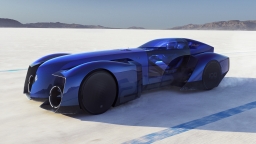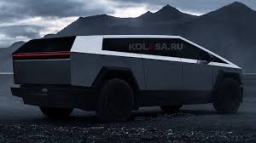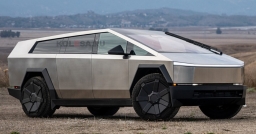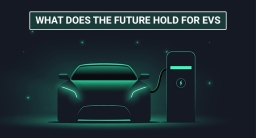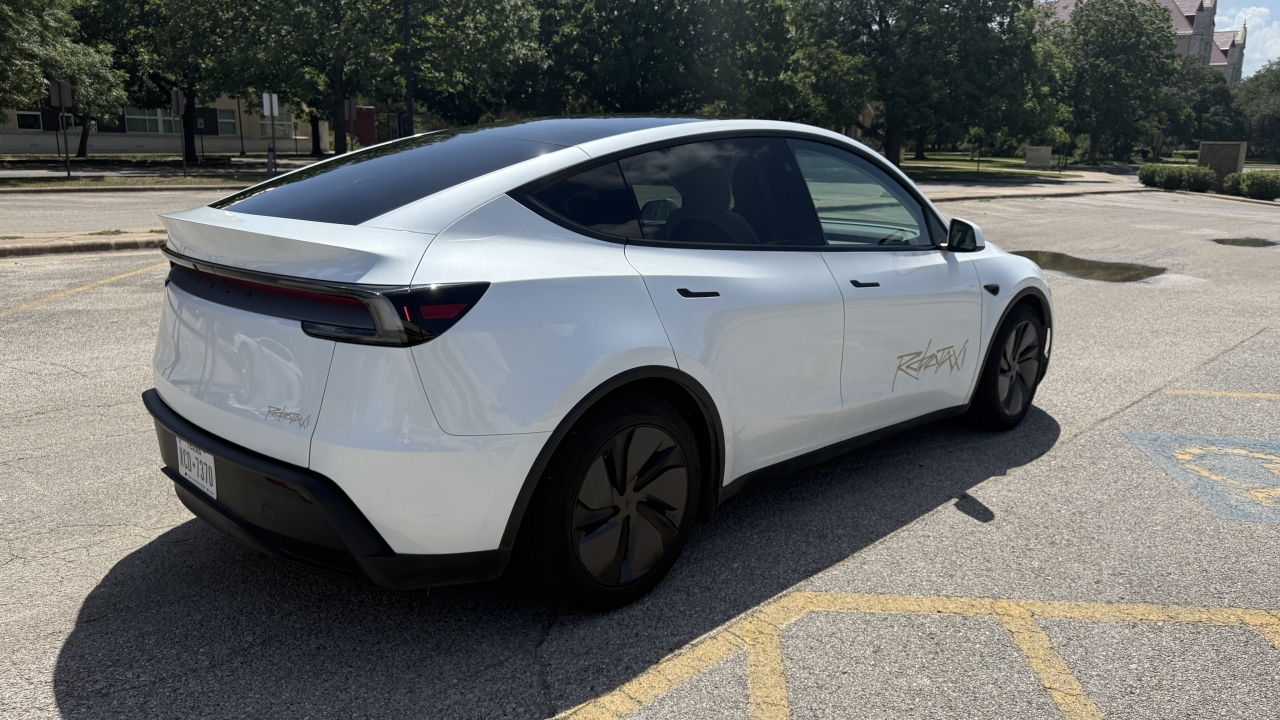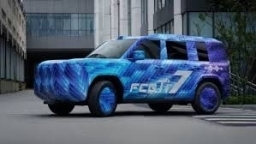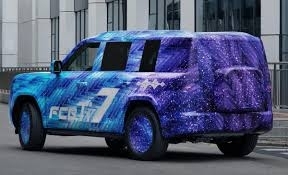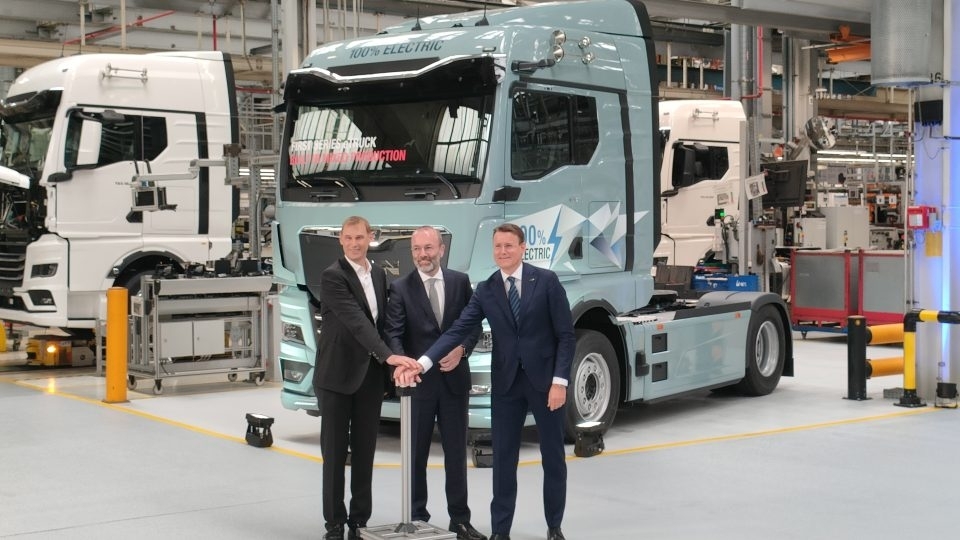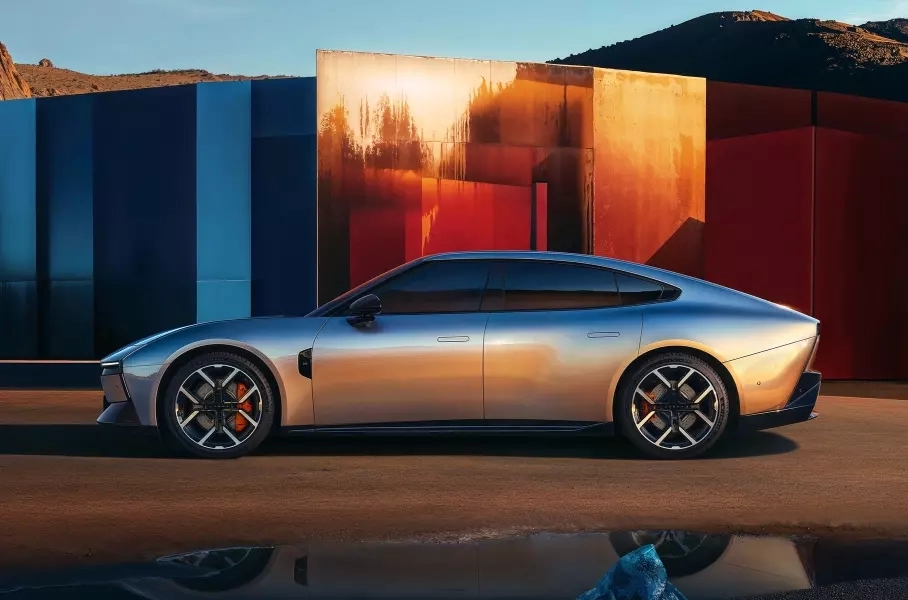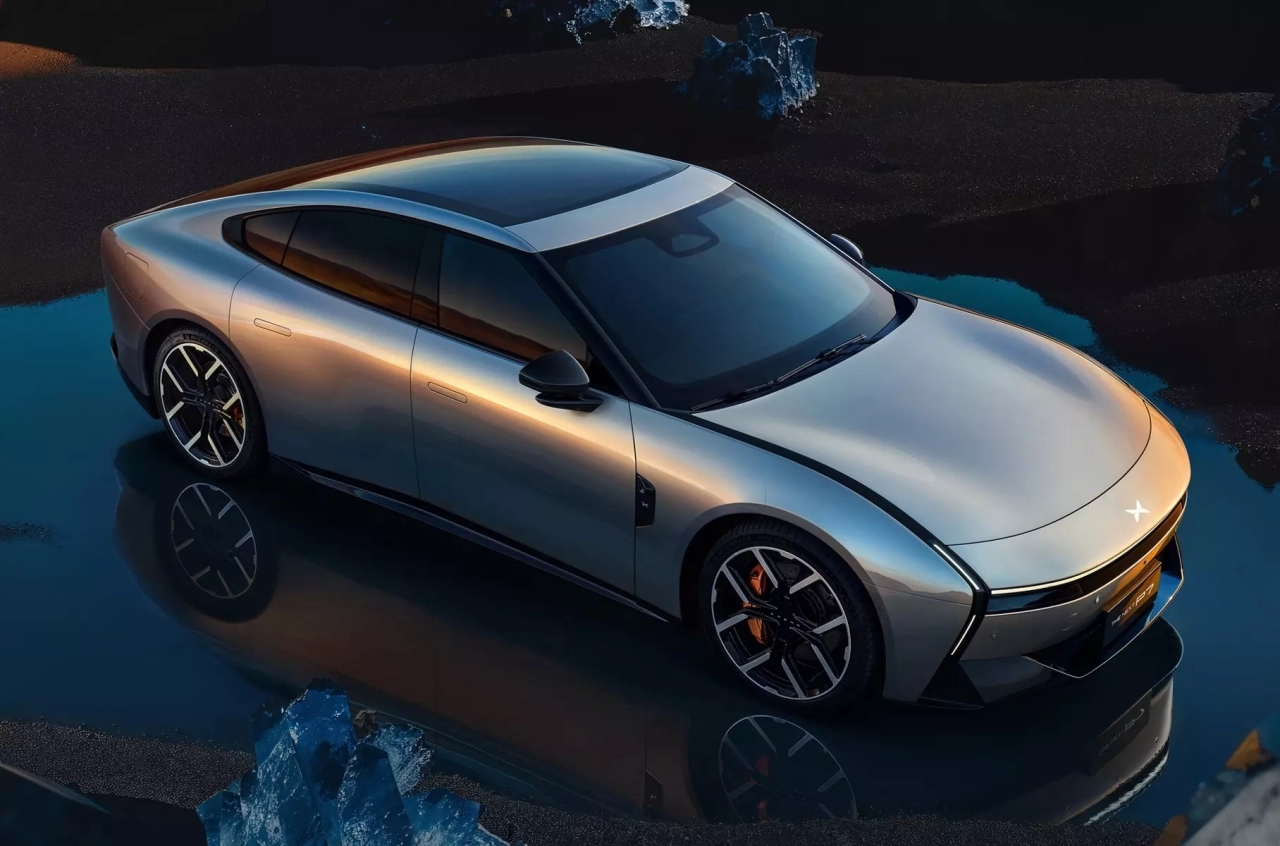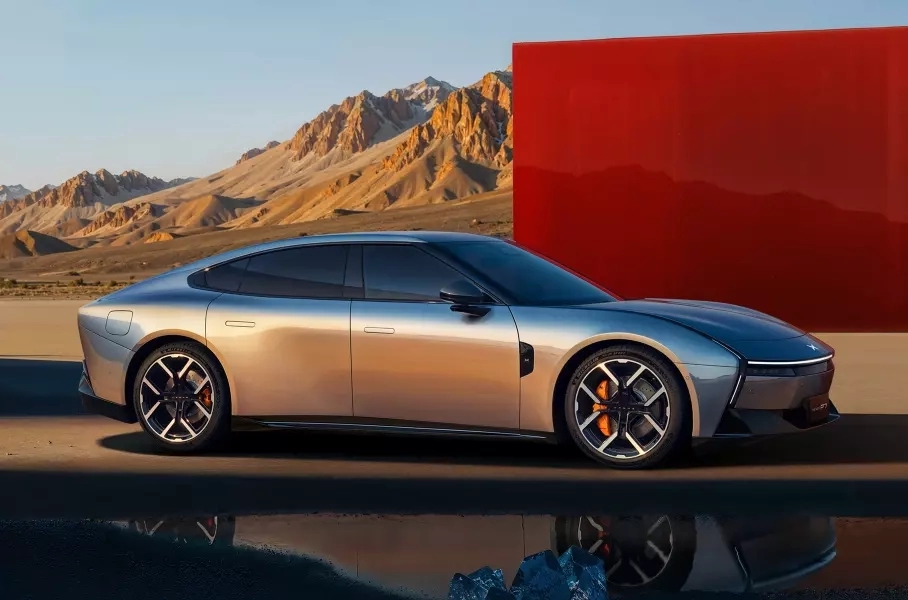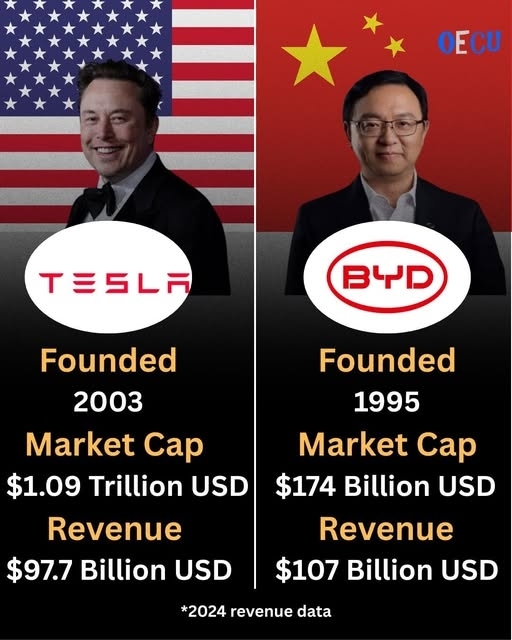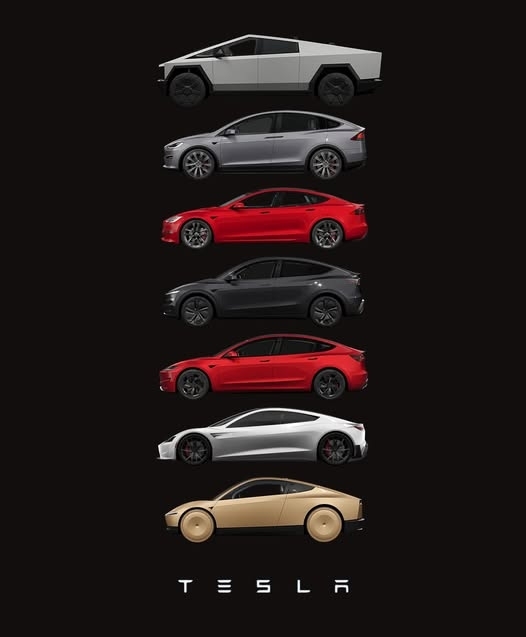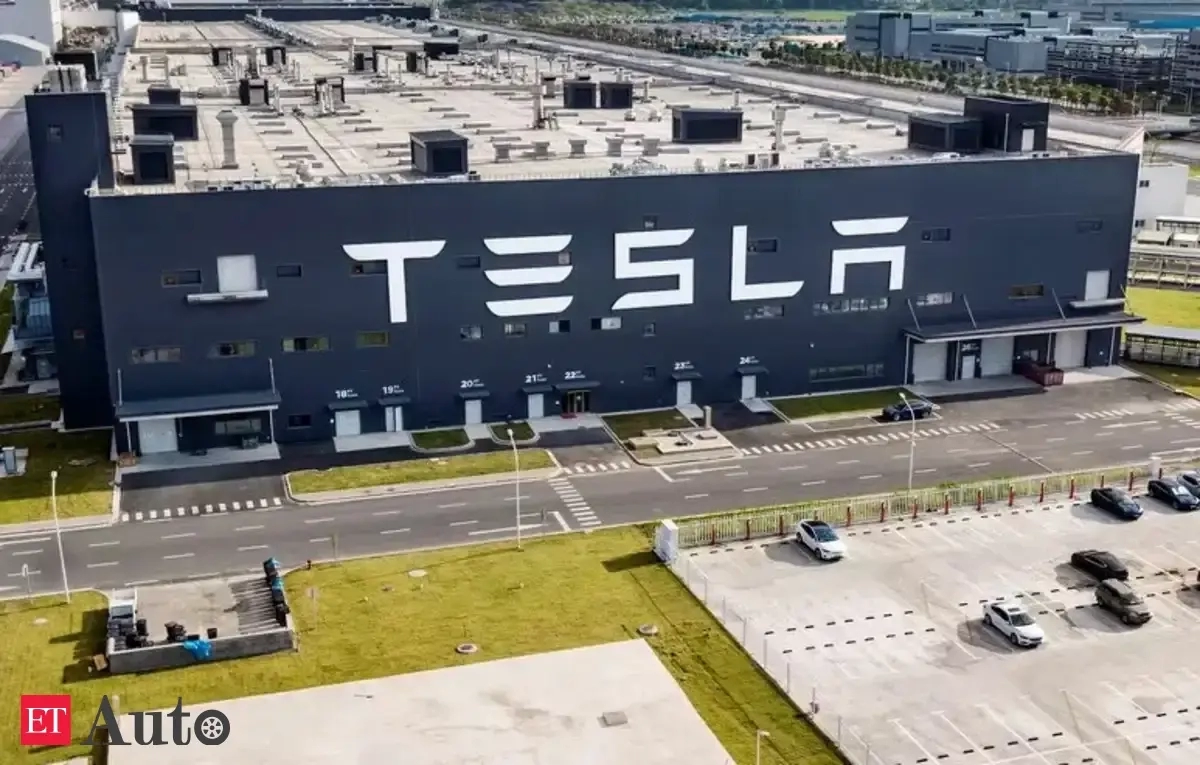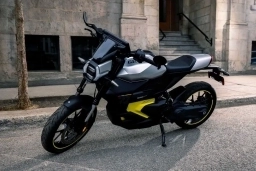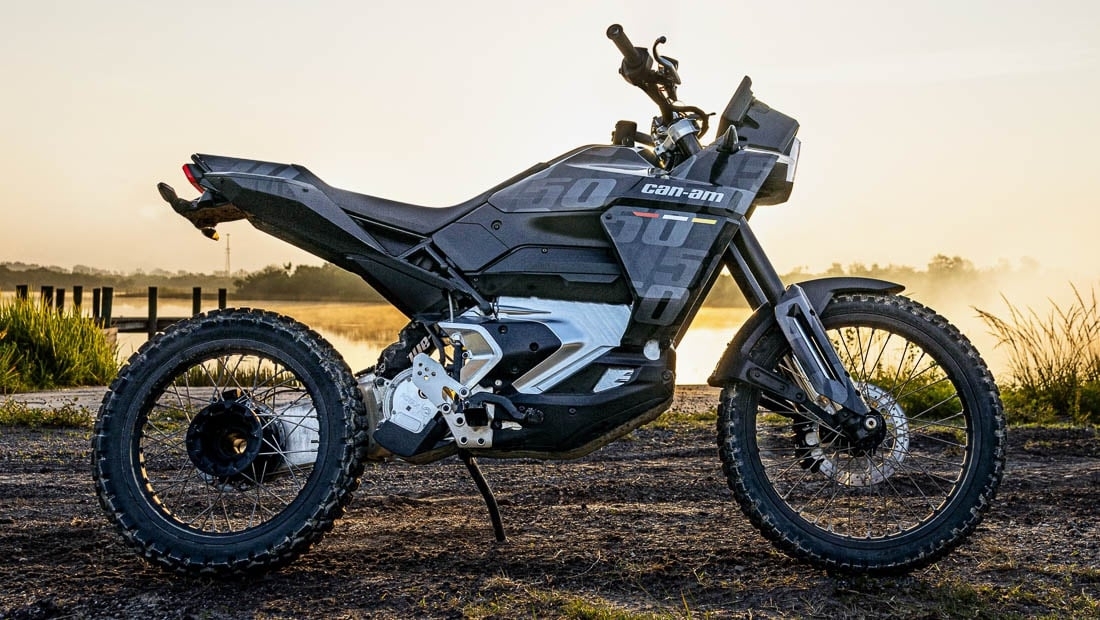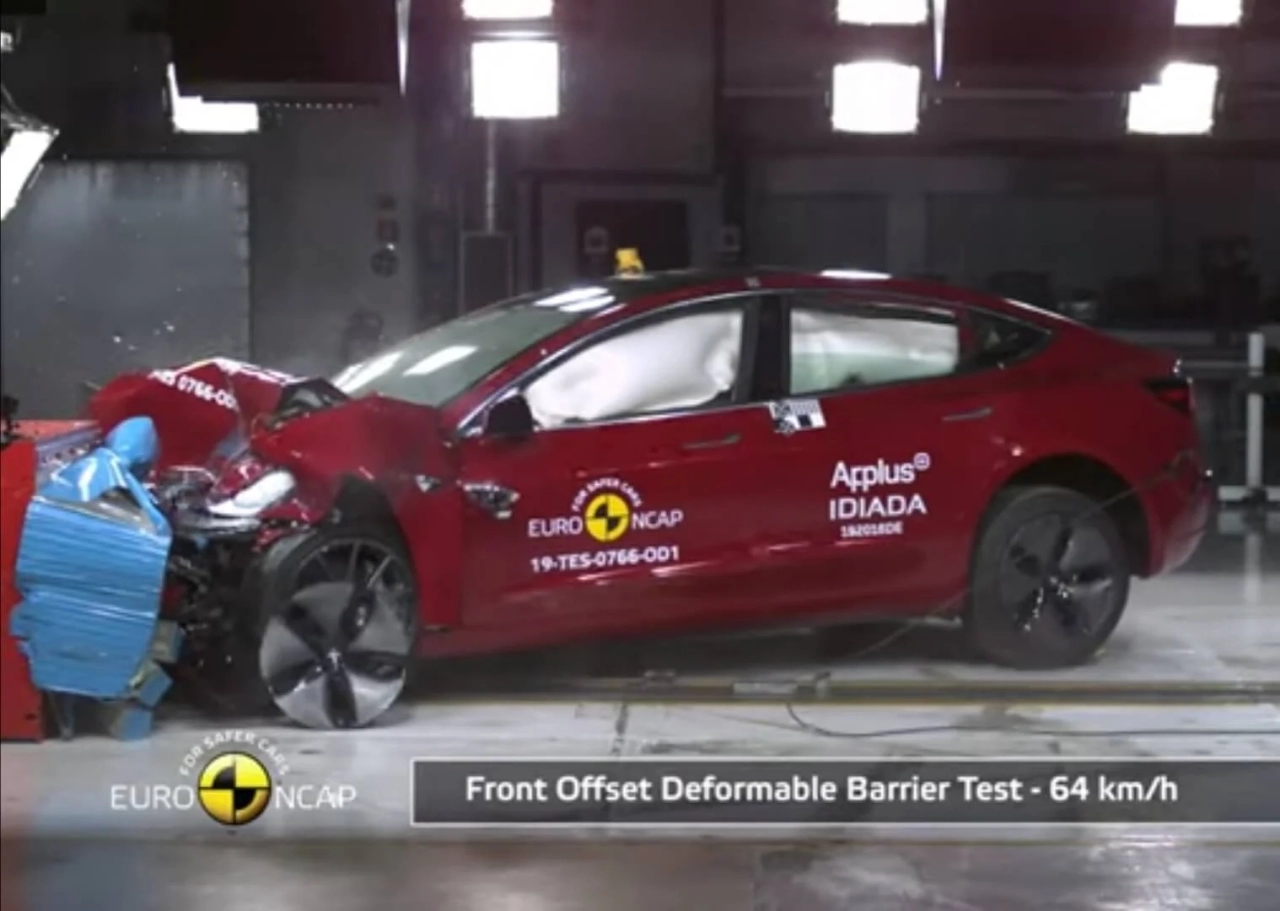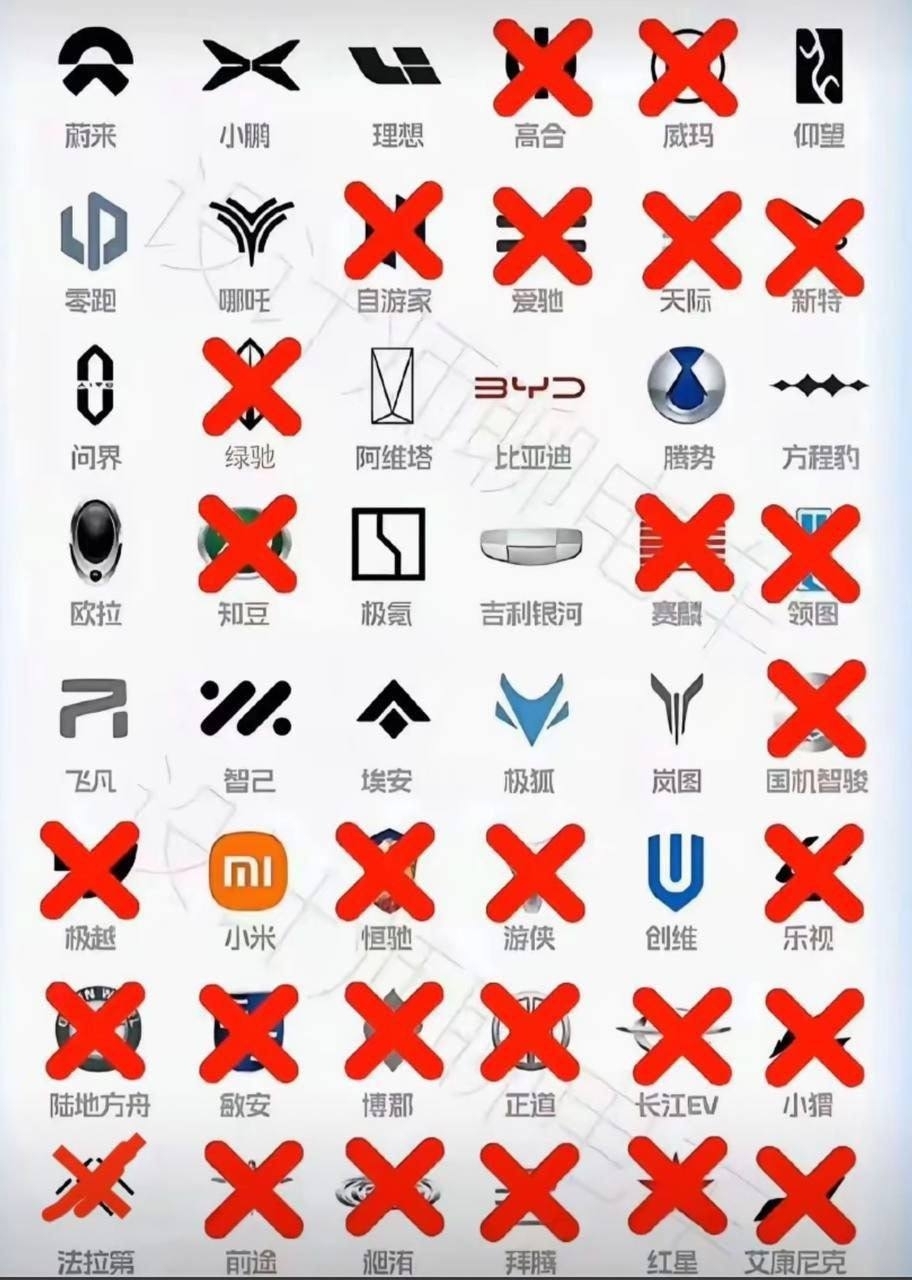- Joined 1 year ago
- 3 Achievements
-
Now in Austin....Post is under moderationStream item published successfully. Item will now be visible on your stream.
-
2026 Leapmotor C16 SUV launched in China
- EV Market News
- Thursday, 19 June 2025
- 115
The Leapmotor C16 is a 2026 mid-size electric SUV launched in China, boasting a 67.7 kWh LFP battery with a 520 km CLTC range. Powered by a 215 kW motor, it hits 0-100 km/h in 6.9 seconds. Priced from $21,500, it blends affordability, tech, and...MoreThe Leapmotor C16 is a 2026 mid-size electric SUV launched in China, boasting a 67.7 kWh LFP battery with a 520 km CLTC range. Powered by a 215 kW motor, it hits 0-100 km/h in 6.9 seconds. Priced from $21,500, it blends affordability, tech, and style to rival BYD and Xpeng.2026 Leapmotor C16: A Fresh Electric SUV Contender
I got a front-row seat to the buzz around the 2026 Leapmotor C16, a mid-size electric SUV that just rolled out in China. This Stellantis-backed rig is gunning for a slice of the crowded Chinese EV market, squaring off against heavyweights like BYD and Xpeng. Measuring 4.91 meters long (that’s 193.3 inches for us Yanks), it’s got the size to haul families comfortably. Priced between 155,800 and 185,800 CNY—roughly €20,000 to €23,800 at today’s exchange rate—it’s a wallet-friendly option with some serious tech chops. Let’s unpack what makes the Leapmotor C16 a contender worth watching.
What is the Leapmotor C16?
The Leapmotor C16 is a 2026 mid-size electric SUV launched in China, boasting a 67.7 kWh LFP battery with a 520 km CLTC range. Powered by a 215 kW motor, it hits 0-100 km/h in 6.9 seconds. Priced from $21,500, it blends affordability, tech, and style to rival BYD and Xpeng. With a 14.6-inch touchscreen and Level 2+ ADAS, it’s built for tech-savvy drivers. This five-seater’s sleek design and spacious cabin make it a practical yet flashy choice for urban adventurers.
Electric SUV Power and Performance
The Leapmotor C16 doesn’t mess around under the hood—or rather, under the floor. Its rear-mounted electric motor pumps out 215 kW, which translates to a peppy 288 horsepower and 360 Nm (265 lb-ft) of torque. That’s enough to zip from 0 to 100 km/h (62 mph) in just 6.9 seconds, making it feel lively for a family hauler. The 67.7 kWh LFP battery delivers a CLTC range of 520 km (323 miles), perfect for weekend getaways or city commutes. It’s not Tesla-fast, but for a mid-size electric SUV, it’s got enough grunt to keep things fun.
Tech That Packs a Punch
Step inside the Leapmotor C16, and you’re greeted by a tech fest. A massive 14.6-inch central touchscreen dominates the dash, paired with a 10.25-inch digital gauge cluster for that futuristic vibe. The optional 8295 chip juices up the infotainment, making everything from navigation to streaming buttery smooth. Level 2+ ADAS brings adaptive cruise control, lane-keeping assist, and automated parking—handy for tight city spots. Toss in a 12-speaker audio system, and you’ve got a cabin that’s as entertaining as it is practical.
Affordable Price, Premium Vibes
Here’s where the Leapmotor C16 shines: it’s priced to move. Starting at 155,800 CNY ($21,500 or €20,000), the base trim keeps things budget-friendly without skimping on essentials. Higher trims, topping out at 185,800 CNY ($25,600 or €23,800), pile on luxuries like heated and ventilated seats and a panoramic sunroof. In a market where EVs can easily climb past $40,000, the C16’s value is a breath of fresh air. It’s proof you don’t need to break the bank for a Stellantis-backed EV with serious credentials.
Conclusion
Pros and Cons of the Leapmotor C16
- Pros: Affordable starting price, solid 520 km range, spacious and tech-loaded interior, zippy performance for a family SUV.
- Cons: Limited global availability for now, CLTC range may drop in real-world conditions, base trim misses some premium features.
Final Thoughts
The Leapmotor C16 is a budget-friendly electric SUV that punches above its weight. With a roomy cabin, a 520 km range, and tech that rivals pricier models, it’s a smart pick for families or tech enthusiasts. Whether you’re cruising Shanghai or eyeing a future export, the C16’s mix of value and flair makes it a compelling choice in the Chinese EV market.
Post is under moderationStream item published successfully. Item will now be visible on your stream. -
BYD Shows Official Photos of Ti7 in Camouflage
BYD has officially unveiled photos of its upcoming FangChengBao Ti7 SUV, which could become the sub-brand's largest model.
The length is expected to exceed 5 m, and the powertrain will include a...BYD Shows Official Photos of Ti7 in CamouflageMore
BYD has officially unveiled photos of its upcoming FangChengBao Ti7 SUV, which could become the sub-brand's largest model.
The length is expected to exceed 5 m, and the powertrain will include a 2.0-liter turbo engine and electric motors with a total output of 748 hp and 760 Nm.
The premiere and start of sales are scheduled for Q4 2025, and the estimated starting price will be around ¥300,000Post is under moderationStream item published successfully. Item will now be visible on your stream. -
Post is under moderationStream item published successfully. Item will now be visible on your stream.
-
MAN begins serial production of electric trucks
A truly historic moment: after a century of producing diesel trucks, the German auto giant MAN Truck & Bus is starting serial production of electric vehicles.
Now they will be produced...MAN begins serial production of electric trucksMore
A truly historic moment: after a century of producing diesel trucks, the German auto giant MAN Truck & Bus is starting serial production of electric vehicles.
Now they will be produced together with diesel trucks in a mixed process on one line. The range includes models from 12 to 50 tons of the entire range - from garbage trucks to long-haul trucks.
The Munich plant produces about 100 trucks per day, regardless of the type of drive. The production of one vehicle takes about eight hours.
MAN has previously manufactured 200 electric pre-series trucks for customers. They are equipped with batteries with a range of 500 km and 740 km.
These vehicles have already covered about 2 million km in real conditions - some have traveled up to 850 km per day, and the average consumption was 97 kWh/100 km. MAN has already received around 700 orders for electric trucks.Post is under moderationStream item published successfully. Item will now be visible on your stream. -
Refreshed IM LS7 Debuts with Advanced Four-Wheel Steering and Upgraded Features
- EV Market News
- Tuesday, 17 June 2025
- 111
The 2026 IM LS7, an all-electric mid-size crossover from IM Motors, a premium EV brand under SAIC, has been unveiled with significant updates, including a new intelligent four-wheel steering system. Launched initially in February 2023, the LS7...
MoreThe 2026 IM LS7, an all-electric mid-size crossover from IM Motors, a premium EV brand under SAIC, has been unveiled with significant updates, including a new intelligent four-wheel steering system. Launched initially in February 2023, the LS7 aims to bolster its position in China’s competitive EV market with enhanced technology, improved range, and a refreshed design. Here’s a detailed look at the revamped model.
Intelligent Four-Wheel Steering
The standout feature of the 2026 IM LS7 is its intelligent four-wheel steering system, a first for the model. This system enhances maneuverability by allowing the rear wheels to turn up to 5 degrees in the opposite direction of the front wheels at low speeds, reducing the turning radius to 4.8 meters—ideal for tight urban environments. At higher speeds, the rear wheels align with the front wheels for improved stability during lane changes or cornering. The system adapts to various driving scenarios, offering three steering modes: Urban, Standard, and Sport. These can be customized via the vehicle’s settings for a tailored driving experience.
Powertrain and Performance
The refreshed LS7 retains its robust electric powertrain, available in single-motor rear-wheel-drive (RWD) and dual-motor all-wheel-drive (AWD) configurations. The RWD model delivers 340 horsepower and 391 lb-ft of torque, while the AWD variant boosts output to 558 hp and 535 lb-ft, achieving a 0-60 mph sprint in approximately 4.5 seconds. Both versions use a 90-kWh ternary lithium battery, offering a CLTC range of up to 415 miles for the RWD model and 385 miles for the AWD, a slight improvement over the previous model’s 404 and 375 miles, respectively. Real-world EPA estimates would likely be closer to 330–350 miles.
The LS7 now supports 150 kW DC fast charging, enabling a 10–80% charge in about 25 minutes. A new thermal management system enhances battery performance in cold climates, addressing a common EV pain point.
Exterior and Interior Updates
The 2026 LS7 sports subtle exterior tweaks, including a revised front fascia with sleeker LED headlights and a more sculpted bumper. The aerodynamic profile remains, with a drag coefficient of 0.27, and new 21-inch alloy wheel designs add flair. The side and rear retain the signature floating roof and full-width taillight bar, maintaining its futuristic aesthetic.
Inside, the cabin sees upgraded materials, with premium vegan leather and recycled plastics across all trims. The massive 26.3-inch main touchscreen and 15.5-inch passenger display remain, now powered by a Qualcomm Snapdragon 8295 chip for faster response times. A 12.3-inch digital gauge cluster, wireless Apple CarPlay/Android Auto, and an updated voice assistant with natural language processing enhance connectivity. The “zero-gravity” front seats, adjustable in 14 directions, and a panoramic sunroof with adjustable opacity elevate comfort. Rear legroom and cargo space (exact figures TBD) remain generous, rivaling competitors like the NIO ES6.
Advanced Driver Assistance Systems (ADAS)
The LS7’s IM AD suite has been upgraded with a new lidar sensor, 12 cameras, and 5G connectivity for improved semi-autonomous driving. Standard features include adaptive cruise control, lane-keep assist, blind-spot monitoring, and automatic emergency braking. The system now supports hands-free highway driving and automated parking in complex scenarios, positioning it against rivals like the Xpeng G9. Over-the-air updates ensure continuous improvements to ADAS and infotainment.
Pricing and Market Position
The 2026 IM LS7 is priced between 299,800 and 399,800 yuan (approximately $41,000–$55,000 USD), slightly higher than its predecessor due to the added tech. This pits it against the BYD Yangwang U7, NIO ES6, and Zeekr 001 in China’s premium EV segment. While IM Motors focuses on the Chinese market, whispers of global expansion (potentially to Europe) persist, though no concrete plans have been confirmed.
Pros
- Intelligent four-wheel steering enhances agility and stability
- Improved range (up to 415 miles CLTC)
- Faster 150 kW charging
- Luxurious, tech-packed interior
- Advanced ADAS with lidar and 5G
- Competitive pricing for the segment
Cons
- Limited global availability (China-focused)
- EPA range may fall short of CLTC estimates
- Faces fierce competition from NIO, Xpeng, and BYD
- Incremental exterior updates may not excite all buyers
Verdict
The 2026 IM LS7 builds on its predecessor’s strengths with a smarter four-wheel steering system, longer range, and cutting-edge tech, making it a formidable player in China’s premium EV crossover market. Its blend of performance, luxury, and advanced driver aids positions it as a strong alternative to NIO and Xpeng offerings. However, its China-centric availability limits its global impact, and real-world range may not fully match CLTC claims. For Chinese buyers seeking a high-tech, stylish EV, the refreshed LS7 is a compelling choice when it hits showrooms in July 2025.
Post is under moderationStream item published successfully. Item will now be visible on your stream. -
Toyota bZ5 coupe SUV started deliveries in China with BYD battery
The China-made Toyota bZ5 fastback SUV started deliveries in 100 cities of the Middle Kingdom. Priced at 129,800 yuan (18,075 USD), this car boasts a BYD battery,...Toyota bZ5 coupe SUV started deliveries in China with BYD batteryMore
The China-made Toyota bZ5 fastback SUV started deliveries in 100 cities of the Middle Kingdom. Priced at 129,800 yuan (18,075 USD), this car boasts a BYD battery, up to 630 km range, and a peak power of 200 kW (268 hp).
The Toyota bZ5 is a fastback crossover launched on June 10 in China. It is being manufactured by the FAW-Toyota joint venture. Moreover, this vehicle adopts BYD tech on board, including an LFP battery from FinDreams. The bZ5 will rival such models as the Tesla Model Y, the Deepal S07, and the Leapmotor C10 in China.Post is under moderationStream item published successfully. Item will now be visible on your stream. -
Mariah Carey Set to Join Faraday Future as Next EV Owner
- General
- Monday, 16 June 2025
- 98
Pop icon Mariah Carey is reportedly poised to become the latest high-profile owner of a Faraday Future electric vehicle, according to sources close to the company. The news, announced on June 16, 2025, adds another celebrity endorsement to...
MorePop icon Mariah Carey is reportedly poised to become the latest high-profile owner of a Faraday Future electric vehicle, according to sources close to the company. The news, announced on June 16, 2025, adds another celebrity endorsement to Faraday Future’s growing list, as the luxury EV maker continues its push to establish a foothold in the premium electric vehicle market.
Faraday Future, known for its flagship FF 91 2.0 Futurist Alliance, has been gaining traction with its blend of cutting-edge technology and high-performance electric powertrains. Carey, a Grammy-winning artist with a flair for extravagance, is said to be drawn to the FF 91’s luxurious design, advanced AI-driven features, and impressive performance specs. The FF 91 boasts a tri-motor setup delivering up to 1,050 horsepower, a 0-60 mph sprint in under 2.3 seconds, and an EPA-estimated range of 381 miles, making it a standout in the luxury EV segment.
Sources indicate Carey’s interest aligns with Faraday Future’s strategy to target celebrity influencers to boost brand visibility. The company has faced challenges, including production delays and financial hurdles, but recent progress—such as the delivery of 13 FF 91 vehicles in 2024 and plans for a more affordable “Faraday B” model in 2025—signals a potential turnaround. Carey’s involvement could further elevate the brand’s appeal, especially as it aims to compete with rivals like Tesla, Lucid, and Rivian.
The FF 91’s interior, featuring a 27-inch rear passenger display, zero-gravity seats, and an AI-powered “Intelligent Cabin,” is likely a draw for Carey, whose penchant for luxury is well-documented. The vehicle’s $309,000 price tag for the Futurist Alliance trim reflects its premium positioning, though Faraday Future has hinted at a sub-$100,000 model to broaden its market reach.
While the deal is not yet finalized, insiders suggest Carey’s team is in advanced talks with Faraday Future for a customized FF 91, potentially featuring bespoke design elements. This move follows other celebrity endorsements, such as actor Chris Pine, who was spotted with an FF 91 last year. Faraday Future’s CEO, Matthias Aydt, emphasized the brand’s focus on “co-creation” with owners, allowing for personalized touches that could appeal to Carey’s unique style.
As Faraday Future ramps up production at its Hanford, California facility and expands its global presence through partnerships in the Middle East and China, Carey’s potential ownership could provide a significant PR boost. However, the company must still navigate supply chain challenges and prove its long-term viability in a competitive EV landscape.
For now, fans and industry watchers alike are eager to see if Carey will officially join the Faraday Future family, adding her signature sparkle to the brand’s futuristic vision. Stay tuned for updates as this high-profile partnership develops.
Post is under moderationStream item published successfully. Item will now be visible on your stream. -
Xiaomi to launch highly anticipated YU7 SUV in June
Xiaomi CEO Lei Jun just announced today that the highly anticipated Xiaomi YU7 SUV will officially launch by the end of June. The event will also feature the debut of...Xiaomi to launch highly anticipated YU7 SUV in JuneMore
Xiaomi CEO Lei Jun just announced today that the highly anticipated Xiaomi YU7 SUV will officially launch by the end of June. The event will also feature the debut of several other Xiaomi products, including the Xiaomi Pad 7S Pro, which will be the second tablet to feature the Xuanjie O1 chip.
Post is under moderationStream item published successfully. Item will now be visible on your stream. -
Next-Gen Xpeng P7 2025 : Official Images
The electric car will receive a fastback body, and will also make significant advances in terms of technology, approaching the updated G9 crossover. A new platform, an 800-volt...Next-Gen Xpeng P7 2025 : Official ImagesMore
The electric car will receive a fastback body, and will also make significant advances in terms of technology, approaching the updated G9 crossover. A new platform, an 800-volt battery, more powerful power plants and an advanced Turing AI autopilot are expected.
The new car belongs to the fastback class in terms of body type, although the Chinese use a different term - a four-door coupe. The Algerian Rafik Ferrag, a graduate of the prestigious Creapole art school in Paris, was again responsible for the design of the car.
Post is under moderationStream item published successfully. Item will now be visible on your stream. -
Kuickwheel Skyrider X6 eVTOL. Flying motorcycle, pre-orders at 69,000 USD in China.
- New Electric Vehicles
- Friday, 13 June 2025
- 178
Chinese tech company Kuickwheel has launched the Skyrider X6, a revolutionary amphibious flying motorcycle developed by its Rictor division. Available for pre-order on JD.com for 498,800 yuan (approximately $69,000 USD), the X6 combines ground...
MoreChinese tech company Kuickwheel has launched the Skyrider X6, a revolutionary amphibious flying motorcycle developed by its Rictor division. Available for pre-order on JD.com for 498,800 yuan (approximately $69,000 USD), the X6 combines ground and air mobility for short-range commuting and emergency transport.
Features and Performance
The Skyrider X6 is a reverse trike with a dual-mode design. On the ground, it’s powered by an electric motor, reaching speeds of 70 km/h with a 200 km range (CLTC standard). In flight, its 6-axis, 6-rotor electric propulsion system achieves 72 km/h and a 20-minute flight duration. The vehicle’s lightweight construction uses carbon fiber and aviation-grade aluminum alloy. It offers automated takeoff, landing, and route planning, with a joystick for manual control.
Safety and Reliability
Safety features include redundant propulsion and control systems, with independent rotor motors ensuring operation during single-motor failure. The flight control unit has backup logic for stability, and a ballistic parachute deploys automatically in emergencies.
Battery and Charging
The X6’s 10.5 kWh battery supports DC fast charging, fully charging in about one hour, making it practical for urban use.
Background: Skyrider X1
Kuickwheel previously showcased the Skyrider X1 at CES 2025, featuring retractable wheels and a four-axis, eight-rotor system. It comes in two variants:
- X1 SL: 10.5 kWh semi-solid battery, 25-minute flight time.
- X1 SX: 21 kWh battery, up to 40 minutes or 50 km range.
The X1 supports 50 kW fast charging (80% in 30 minutes) and includes a triple-redundant flight controller, a 0.3-second emergency parachute, and real-time battery monitoring.
Market Context and Challenges
Kuickwheel claims aerial commuting could cut travel times significantly, such as reducing a 90-minute car trip in Shanghai to 15 minutes by air. Operating costs are approximately 3 yuan ($0.41 USD) per km in flight mode, with annual maintenance costs of 20,000–30,000 yuan ($2,800–$4,200 USD). However, China’s civilian low-altitude airspace (below 200 meters) remains restricted, and operating the Skyrider requires a light sport aircraft license, costing around 50,000 yuan ($6,900 USD) for training. The X6 competes with XPeng AeroHT’s flying car, priced at 1.2 million yuan ($166,000 USD).
Conclusion
The Skyrider X6 is an innovative step in urban mobility, blending advanced technology with practical design. While regulatory hurdles and licensing costs pose challenges, its competitive pricing and versatile features make it a compelling option for early adopters and emergency services.
Post is under moderationStream item published successfully. Item will now be visible on your stream. -
Tesla Y Robotaxis spotted on Austin streets.
- New Electric Vehicles
- Thursday, 12 June 2025
- 138
Tesla's Robotaxi Service to Launch in Austin on June 22
Tesla is set to launch its highly anticipated robotaxi service in Austin, Texas, on June 22, 2025, following regulatory approval from the Texas Department of Transportation. The...
MoreTesla's Robotaxi Service to Launch in Austin on June 22
Tesla is set to launch its highly anticipated robotaxi service in Austin, Texas, on June 22, 2025, following regulatory approval from the Texas Department of Transportation. The service will initially operate in downtown Austin and near the Tesla Gigafactory, using a fleet of modified Model Y vehicles equipped with Tesla’s Full Self-Driving (FSD) software and advanced sensors.
The robotaxi service, part of Tesla’s autonomous driving push, will allow users to book rides via a dedicated app, with fares expected to be competitive with traditional ride-hailing services. Tesla aims to scale the service across Texas cities by 2026, pending further approvals. This launch marks a key milestone in Tesla’s vision for a fully autonomous ride-sharing network, though challenges like regulatory hurdles and public trust in self-driving technology remain.
Post is under moderationStream item published successfully. Item will now be visible on your stream. -
In the early 1830s, a Scottish inventor named Robert Anderson made history by creating one of the world’s first electric vehicles, a crude electric carriage, sometime between 1832 and 1839. This groundbreaking invention marked a pivotal moment in...In the early 1830s, a Scottish inventor named Robert Anderson made history by creating one of the world’s first electric vehicles, a crude electric carriage, sometime between 1832 and 1839. This groundbreaking invention marked a pivotal moment in the evolution of transportation, introducing the concept of a horseless carriage powered by electricity—a radical departure from the horse-drawn and steam-powered vehicles of the era.More
Anderson’s electric carriage was powered by non-rechargeable primary cells, likely galvanic cells, which generated electric current to drive a rudimentary electric motor. While innovative, the vehicle was far from practical. The batteries, unable to be recharged, limited the carriage’s range and utility, making it more of a technological demonstration than a viable mode of transport. Compared to steam-powered vehicles, which dominated the early 19th century, Anderson’s creation was a novelty, constrained by the era’s limited battery technology.
Despite its limitations, Anderson’s work was revolutionary. By eliminating the need for horses or bulky steam boilers, his carriage showcased the potential of electricity as a propulsion source. It inspired contemporaries like Hungarian Ányos Jedlik, who built a small-scale electric model car in 1828, and Scottish inventor Robert Davidson, whose electric locomotive followed in 1837.
The true potential of electric vehicles emerged decades later with the invention of rechargeable lead-acid batteries by Gaston Planté in 1859 and improvements by Camille Faure in 1881, which made EVs more practical. Anderson’s carriage, though a fleeting experiment, laid critical groundwork for these advancements.
Robert Anderson’s electric carriage, born in Scotland nearly two centuries ago, was a bold vision of a cleaner, quieter future. While it didn’t transform transportation in its time, it sparked ideas that would shape the development of modern electric vehicles, proving that even the simplest innovations can drive progress.
Post is under moderationStream item published successfully. Item will now be visible on your stream. -
🚗 EV Showdown: Tesla vs. BYD! ⚡️
🔹 Tesla Inc.
• Founded: 2003
• Market Cap: ~$1.093T
• 2024 Revenue: ~$97.7B
• Q1 2025 earnings plummeted by 40% as U.S. & EU demand slowed, despite robotaxi hype.
🔹 BYD Co. Ltd.
• Founded: 1995
• Market...🚗 EV Showdown: Tesla vs. BYD! ⚡️More
🔹 Tesla Inc.
• Founded: 2003
• Market Cap: ~$1.093T
• 2024 Revenue: ~$97.7B
• Q1 2025 earnings plummeted by 40% as U.S. & EU demand slowed, despite robotaxi hype.
🔹 BYD Co. Ltd.
• Founded: 1995
• Market Cap: ~$174.86B
• 2024 Revenue: $107B
• Outpaced Tesla in Q1 2025 with 1M+ global EV sales and aggressive expansion in Asia, Latin America & Europe.
💥 While Tesla struggles with shrinking margins and weaker demand, BYD is surging ahead! Who’s winning the EV race? ⚡️🏎️
#EVWar #Tesla #BYD #ElectricCars #FutureOfMobilityPost is under moderationStream item published successfully. Item will now be visible on your stream. -
BYD CEO: This NEW Electric Bus Will Shakes The ENTIRE EV Industry!
- New Electric Vehicles
- Monday, 02 June 2025
- 212
While Tesla and major carmakers chased better batteries, longer ranges, and faster charging, BYD quietly crafted a game-changer: the BYD B7 electric bus. Unveiled in 2025, this isn’t just a bus—it’s a revolution in public transport,...
MoreWhile Tesla and major carmakers chased better batteries, longer ranges, and faster charging, BYD quietly crafted a game-changer: the BYD B7 electric bus. Unveiled in 2025, this isn’t just a bus—it’s a revolution in public transport, redefining sustainable energy and smart cities.
Silently rising from Shenzhen, China, BYD, a battery expert, flipped the EV world upside down. In 2013, Elon Musk laughed at BYD’s potential, but by 2024, BYD sold 4.27 million vehicles (EVs and hybrids) to Tesla’s 1.79 million, soaring 60% in early 2025 while Tesla dropped 13%. Affordable cars, 15% cheaper than Tesla’s, fueled global growth—outselling Tesla in Italy, Spain, and beyond.
The B7 is the star: a 250-mile range from its safe, eco-friendly Blade Battery (lithium iron phosphate) and a 2025 Super E-Platform that adds 250 miles in 5 minutes—faster than Tesla’s 200 miles in 15. Its electric powertrain delivers instant torque, zero emissions, and a quiet, comfy ride with spacious seats, climate control, and Wi-Fi. Smart tech—lane-keeping, adaptive cruise, and real-time route optimization—makes it safer and efficient.
BYD’s edge? They make their own batteries, motors, and chips, cutting costs 15% below Tesla’s, per a 2023 UBS report. Cities like Shenzhen, now fully electric, and London, Amsterdam, and Latin America love the B7’s low running costs and reliability. In 2025, Europe deliveries jumped 20%. The electric bus market, $17 billion in 2024, is set to hit $37.5 billion by 2030, with BYD leading.
The B7 isn’t just a bus—it’s a vision of clean, smart transit, challenging diesel giants and Tesla’s car focus. BYD’s hybrid buses, with SuperDM tech, blend electric (70 km zero-emission) and fuel efficiency (6 L/100 km), reaching 1,000+ km range. High-efficiency motors, a 43.04% thermal-efficient engine, and the Blade Battery save money and cut emissions, winning in Colombia and beyond.
Despite U.S. tariffs, BYD builds factories and partnerships worldwide. The B7 and BYD’s grit—backed by $250 million from Warren Buffett in 2009—push a greener future, with 2024 revenue at $107 billion topping Tesla’s $97.7 billion. The B7 proves innovation isn’t just from Silicon Valley—it’s from Shenzhen, transforming urban travel one ride at a time.
Post is under moderationStream item published successfully. Item will now be visible on your stream. -
Elon Musk says almost anyone will be able to afford a Tesla in the future if they add it to the Robotaxi fleet.
“You will also be able to add your car to the Tesla shared fleet just by tapping a button on the Tesla phone app and have it generate...Elon Musk says almost anyone will be able to afford a Tesla in the future if they add it to the Robotaxi fleet.More
“You will also be able to add your car to the Tesla shared fleet just by tapping a button on the Tesla phone app and have it generate income for vou while you're at work or on vacation, significantly offsetting and at times potentially exceeding the monthly loan or lease cost.
This dramatically lowers the true cost of ownership to the point where almost anyone could own a Tesla. Since most cars are only in use by their owner for 5% to 10% of the day, the fundamental economic utility of a true self-driving car is likely to be several times that of a car”Post is under moderationStream item published successfully. Item will now be visible on your stream. -
Alex Roy reacted to this post about 1 month agoTesla doesn't give up: Berlin plant prepares for massive expansion despite protests and crisis
Tesla plans to double production in Germany despite falling sales
Tesla continues to increase production at its Berlin plant despite the difficult...Tesla doesn't give up: Berlin plant prepares for massive expansion despite protests and crisisMore
Tesla plans to double production in Germany despite falling sales
Tesla continues to increase production at its Berlin plant despite the difficult market situation and falling sales. In April, the company's sales in Europe fell by 49%, which is due to growing competition and political reactions to the actions of Elon Musk. However, Tesla, as Bloomberg reports, is not abandoning its plans to expand the plant, which has produced 500,000 cars this year.
At the moment, the German Gigafactory produces about 5,000 Model Y per week, but Tesla aims to double this number. The Berlin plant is going to produce new models and expand production capacity, despite the objections of environmental activists who consider the plant too harmful to the environment.Post is under moderationStream item published successfully. Item will now be visible on your stream. -
Can-Am Releases Two New Electric Motorcycles
Can-Am Pulse (Urban Commuter)
Price: Starting at $13,999
Range: Up to 100 miles in city conditions | Approximately 80 miles combined
Weight: Approximately 390 lb (177 kg)
Can-Am Origin (Dual-Sport)
...Can-Am Releases Two New Electric MotorcyclesMore
Can-Am Pulse (Urban Commuter)
Price: Starting at $13,999
Range: Up to 100 miles in city conditions | Approximately 80 miles combined
Weight: Approximately 390 lb (177 kg)
Can-Am Origin (Dual-Sport)
Price: Starting at $14,499
Range: Up to 90 miles in city conditions | Approximately 70 miles combined
Weight: Approximately 412 lb (187 kg)Post is under moderationStream item published successfully. Item will now be visible on your stream. -
Tesla Model 3 erhält 5 Sterne im Euro NCAP-Crashtest
Die Tesla Model 3 Limousine 2025 hat im Euro NCAP-Sicherheitssystem die höchstmögliche Bewertung von 5 Sternen erhalten. Wertung nach Kategorien: 90 % erwachsene Mitfahrer, 93 % Kinder, 89 %...Tesla Model 3 erhält 5 Sterne im Euro NCAP-CrashtestMore
Die Tesla Model 3 Limousine 2025 hat im Euro NCAP-Sicherheitssystem die höchstmögliche Bewertung von 5 Sternen erhalten. Wertung nach Kategorien: 90 % erwachsene Mitfahrer, 93 % Kinder, 89 % ungeschützte Verkehrsteilnehmer, 87 % elektronische Assistenten.
Die Tests umfassen Versionen mit Hinterradantrieb, Allradantrieb und Performance. Besonders hervorzuheben sind die aktive Motorhaube, die sich im Falle einer Kollision zum Schutz von Fußgängern hebt, und das automatische Bremssystem, das nun auch Motorräder erkennen kann.
Zu den neuen Funktionen gehören die Vorwärtskollisionsvermeidung, die automatische Querverkehrsbremsung und ein Kindererkennungssystem. In diesem Fall wird die Klimaanlage aktiviert, eine Benachrichtigung an das Telefon gesendet und Licht- und Tonsignale eingeschaltet.Post is under moderationStream item published successfully. Item will now be visible on your stream. -
Chinese car brands that went bankrupt over the last year.
Bright! Who was unlucky? That's right! Those who bought their cars. No spare parts, no warranty, no support! Chinese drivers, I love you!Post is under moderationStream item published successfully. Item will now be visible on your stream.



